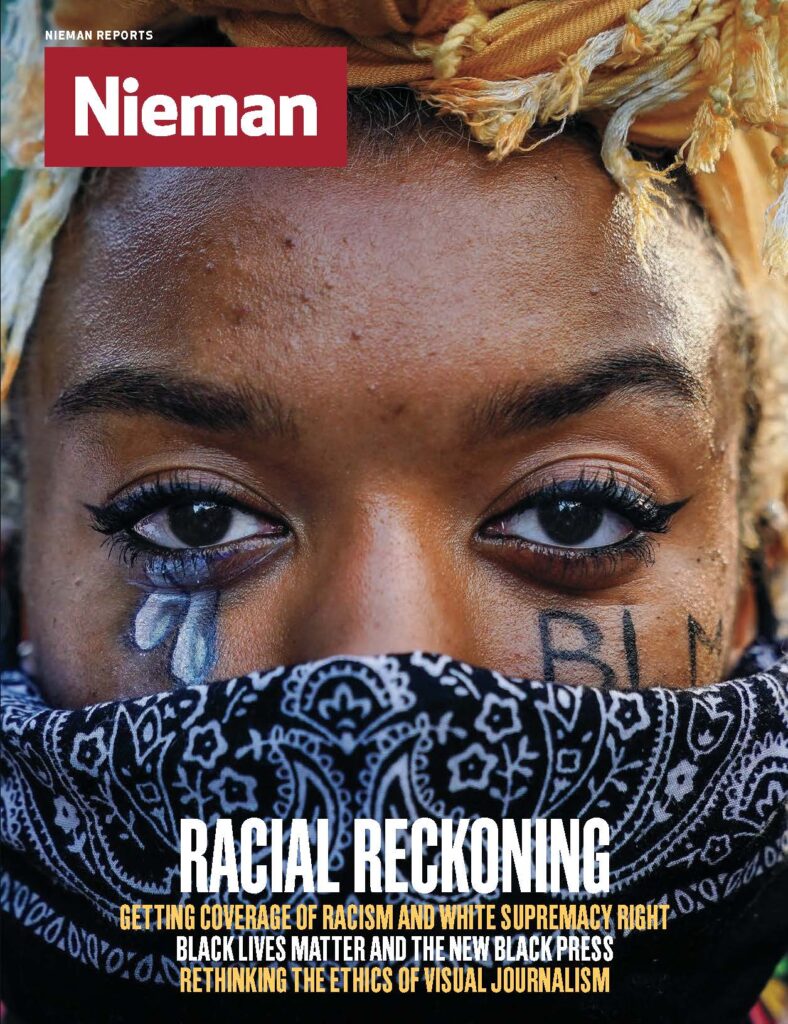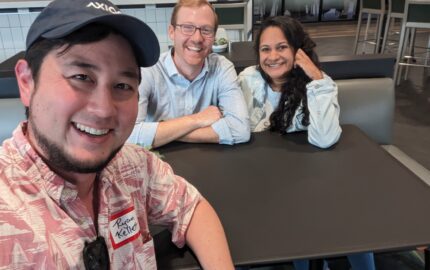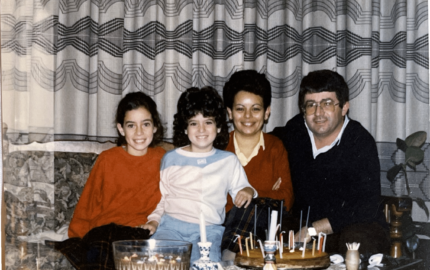
As the coronavirus pandemic wears on and the racial justice movement in the U.S. continues to amplify in the wake of George Floyd’s killing, American society — and American newsrooms — are faced with urgent challenges as well as opportunities for change.
How are news organizations covering this unprecedented time, and how are journalists managing the trauma and stress associated with that work? Nieman Reports examines how the reinvigorated movement for racial justice and the pandemic are prompting newsrooms to fundamentally rethink how stories are covered — and by whom.
Before joining our digital news team at Univision, the largest Spanish-language network in the United States, one of my colleagues worked at the BBC for almost two decades. He recalled walking into a restaurant in Iowa during the 2016 presidential election to interview locals, catching them gathered around watching Univision. When they saw his press pass that identified him as a reporter from Univision News digital, he was greeted with hugs and excitement — not your average reaction for reporters these days. He felt familiar, and they felt seen, not just for one story but for decades.
That audience has always been my compass for Univision News' mission-driven reporting and I never took this relationship with our community for granted.
Growing up in Puerto Rico among older brothers, I was called “mandona,” Spanish for, roughly, “bossy.” I carried the label with pride, and it propelled me to have an active role in student government, public speaking, spoken word, and my college television and radio station and newspaper.
The local television news was a staple in our house in Puerto Rico. I saw television journalists as glamorous people who commanded authority and helped viewers in moments of crisis. When Hurricane Georges hit the island in 1998, I had already decided to pursue journalism in college, but the destruction of my homeland and our home gave immediacy to this calling.
I had no doubts about the perfect newsroom to combine my passion and mission: Univision, home to fierce journalists like Jorge Ramos and María Elena Salinas who I admired for reporting in my native language, Spanish, for the largest minority group in the mainland United States. Members of a minority group that is underreported, underserved, and misrepresented, they reported stories with a different angle than their English-language counterparts.
When I began working at Univision in 2006, the immigration debate was gaining momentum once again. Four years later, the focus was on the undocumented immigrants who were brought to the U.S. as children. I wanted to tell their story in a personal way, to help people see and feel what these young adults saw and felt. I asked four young immigrants who were college students organizing the Trail of Dreams walk in 2010 from Miami to Washington, D.C. to record themselves with their cell phones and share their experiences with Univision viewers during the walk. To anyone who had no idea about their status, they were just American kids, but they were missing the most important thing: a piece of paper that allowed them to stay in the country legally. While walking across the state of Georgia, they encountered a KKK rally. Gaby Pacheco, one of the Trail of Dreams members, told us that they were “very sad and thought, how can some people have so much hatred for so long.”
This kind of approach to news is typical now but back then it was somewhat revolutionary for a television station. For the first time in our national newscast, there was no reporter narrating the story. The voices of the immigrants themselves carried the narrative.
Spanish-language media has helped generations of immigrants navigate the country they live in by holding the powerful accountable on the issues that affect them. But as I’ve learned throughout my year at Harvard it has also left some scars and we have some catching up to do to younger generations. A constant point of discussion among undergraduate Latinx students was the misrepresentation of Latina bodies and the lack of ethnic diversity on the screen. Too often, for example, women’s bodies and women’s roles in society have been oversimplified to a false idea of one skin color, one body type, one look, and one language.
As journalists, we have a responsibility for the voices, images, data, and faces we elevate. We have a lot of work to do to ensure that the most powerful stories we produce are not only covering the biggest crises because our audiences and communities know that the stories of everyday people and lives are more textured than that. We need stories about being Latinx, Black, and American, or as scholars Miriam Jiménez Román and Juan Flores write, “three souls, three thoughts, three unreconciled strivings.”
Newsrooms, regardless of language, can cast wider nets outside of their networks to continue finding the journalists that represent the communities we report on. We all have to catch up when close to 40% of the U.S. population identifies as a person of color and yet, according to a 2019 RTDNA survey on diversity in local newsrooms only 17.2% of local television news directors are people of color.
When we find the journalists, let’s make sure we are not just a token but can hold space, do our jobs, are paid equally, and see a path to grow. This can be attained by creating proper channels of mentorship and sponsorship within and outside our newsrooms and by having open and honest conversations about pay gaps.
We need more collaborations with community-based newsrooms, regardless of language, to develop storytelling that allows the community to take ownership of the narratives.
When it comes to Spanish-language media, we need to create more bilingual newsrooms and stories, because the younger generations are proud to be Latinx in English, Spanish, or Spanglish. According to the Pew Research Center in 2016, 83% of Latinxs said they consumed some of their news in English and 54% in both languages. We owe it to them to continue helping them navigate the country and to hold the powerful accountable on the issues that matter in the language that they prefer.
I am proud to bring my mandona self to the challenge of helping build up a new generation of news reporters, managers, and executives who are reimagining what it means to be Latinx in America — in our grandmother’s living rooms, in our schools, on our phones, and in major newsrooms. A new generation that craves and understands the value of diversity of thought, color, and experiences.



